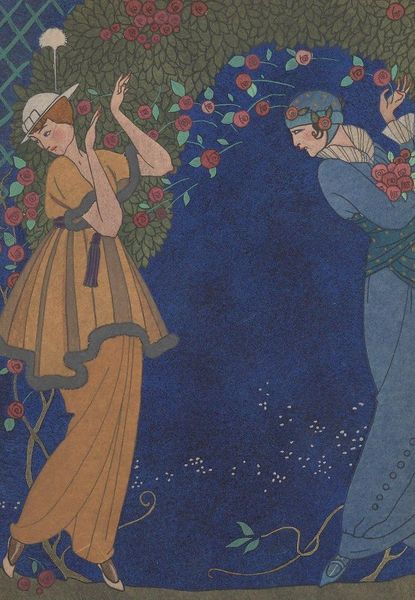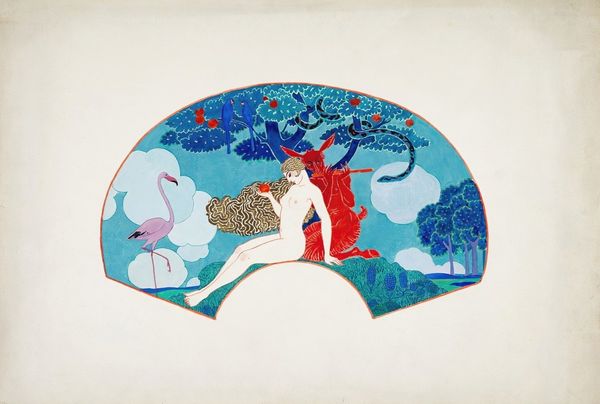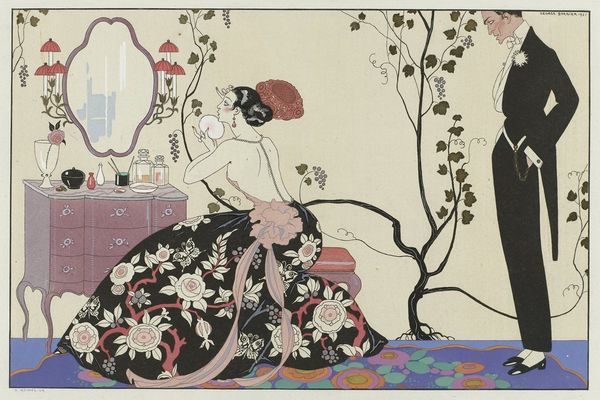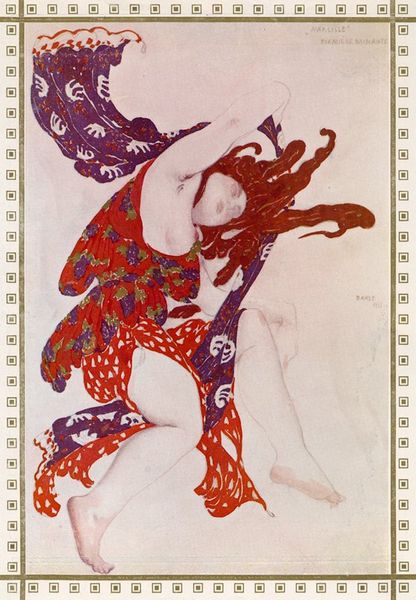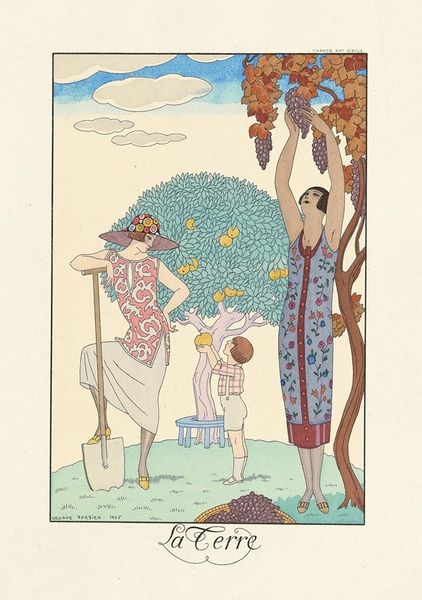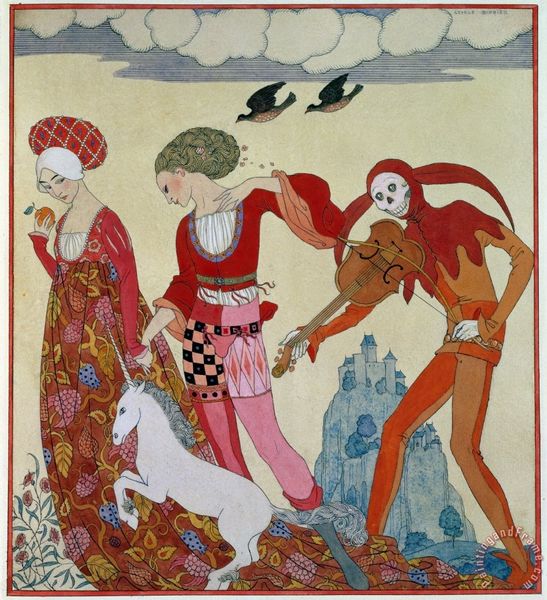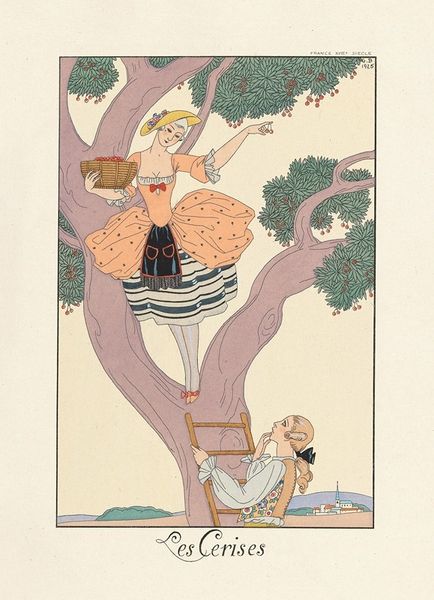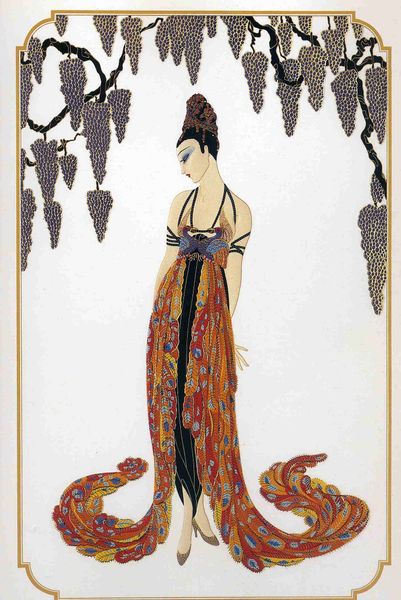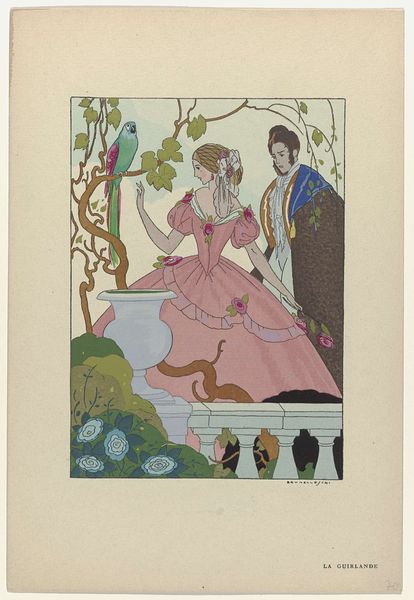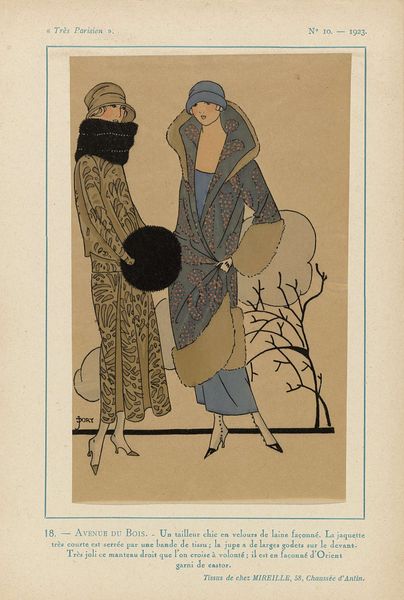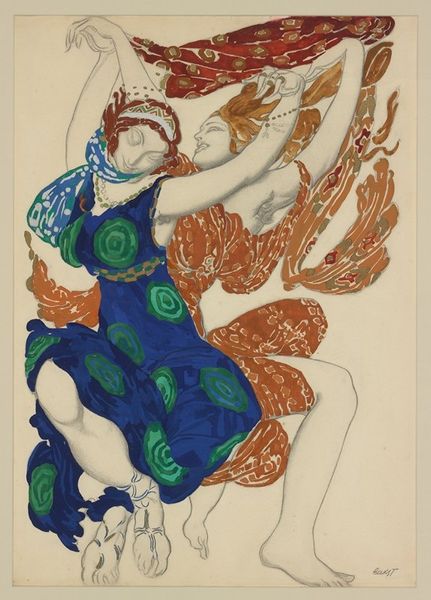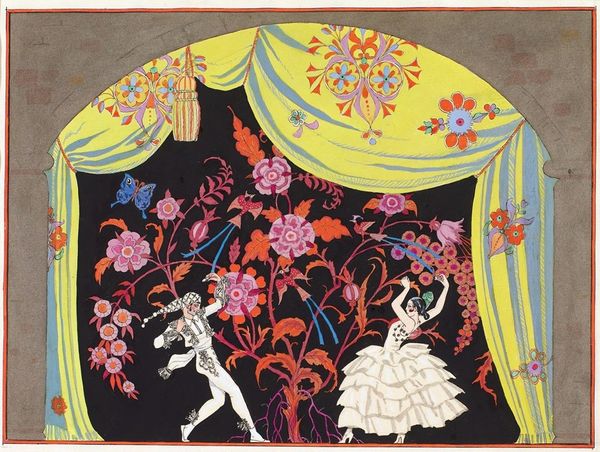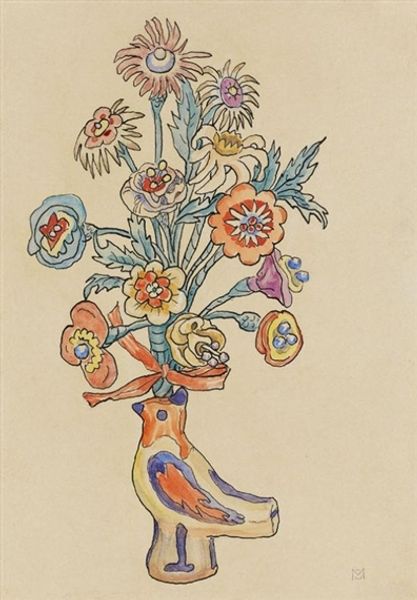
drawing, watercolor
#
portrait
#
drawing
#
art-nouveau
#
landscape
#
figuration
#
watercolor
#
naive art
#
art nouveau
#
watercolour illustration
#
watercolor
Copyright: Public Domain: Artvee
Curator: The piece we’re looking at is entitled "Femme, faon et arbre rouge", which roughly translates to "Woman, Fawn, and Red Tree." The artist is George Barbier, working presumably in the early 20th century, judging from the clear Art Nouveau stylistic elements. It seems to be a watercolor and drawing combination. What do you think of it as a whole? Editor: I find it remarkably poised, even serene. There's an undeniable element of fantasy, with that vividly colored tree contrasting the more muted palette of the woman's dress and the fawn. The whole thing reads like a delicately crafted illustration, perhaps for a book of poems? Curator: Precisely. Barbier was a prominent figure in the Parisian art scene and known for his costume and set designs as well as his illustration work, often for luxury fashion publications. Notice the way the stylized blossoms mimic the ornamentation on her dress, drawing attention to the burgeoning culture of couture. How the emerging design industry was so tightly integrated into artistic practice. Editor: That connection is key, isn't it? The fashion industry in this era had everything to do with consumption and class. Do you think that explains her idealized form as she engages with this decorative nature? How accessible or attainable would that ideal be? Curator: I believe it speaks more towards the aspirations of Barbier's wealthy clientele. This work exists because of the growing economic power afforded to a certain echelon of society in the 20th century. Looking closely, one might consider if this image normalizes consumption as an attainable element of grace or beauty. Editor: I find it so intriguing how the very process of creation—the specific media choices such as watercolour— lend itself to this idea of accessible elegance. Something that can be replicated. But maybe that is just part of the deception! Curator: Indeed, it encapsulates an era defined by its artistic dynamism but rooted in exclusivity. Considering Barbier's other contributions in theater and publishing it's intriguing how artists leveraged visual culture. This period offered many of its stakeholders to define social roles and self perception in modernity. Editor: And in turn it shows us so much about who they wanted to be seen as, how taste can be just as powerful of a narrative. I will look at his set designs later this evening with this new understanding!
Comments
No comments
Be the first to comment and join the conversation on the ultimate creative platform.
